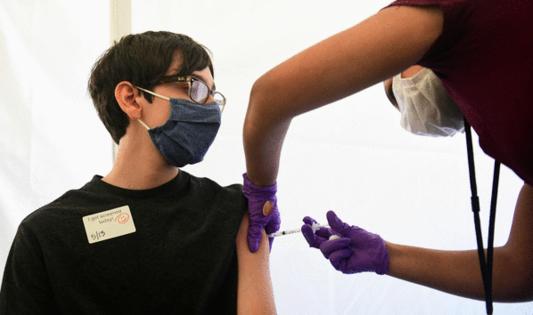COVID-19 cases surge in Maryland as summer ends and school begins
Published in Health & Fitness
BALTIMORE – COVID-19 hospitalizations in Maryland are up 123% over the last two weeks, the most hospitalizations in a month since April. While the state has typically seen a surge in COVID-19 cases during summer, this one is coming later than usual.
According to data from Maryland Department of Health Vital Statistics Administration, newly reported cases of COVID-19 in Maryland are up 50% within the last two weeks, with 2,089 cases from July 29 to Aug. 12 compared to 1,427 cases between July 15 and July 29.
Maryland had 67 COVID-19 hospitalizations within the past two weeks, up 37 from the previous two-week period. Last year, COVID cases were at their peak of the summer spike by this time in August, with 5,000 cases within some two-week periods.
Andrew Pekosz, a professor with the Johns Hopkins Bloomberg School of Public Health, said that COVID-19 surges have fallen into a seasonal pattern, similar to influenza, with minor surges like this one happening slightly earlier or later each year.
“We’ve got some variants that have been around for several months now, as people have been now sort of moving inside because of the heat,” Pekosz said. “We’re starting to see some of the conditions get a little bit better for virus spread.”
National Wastewater Surveillance System data shows that COVID-19 viral activity level was low from July 27 to Aug. 2. However, viral COVID-19 activity in wastewater is very high in some areas of Maryland, including Montgomery County and Anne Arundel. Viral activity is also increasing slowly statewide. Wastewater monitoring can detect viruses and health trends in a community.
Pekosz said that although signs of a minor surge of COVID-19 cases could be concerning, it is a part of a pattern for the virus. While cases may go up as summer ends, they should likely follow the trend from past years of dropping in the fall.
Cases also tend to spike when new variants evolve, he said.
“So eventually we’re going to hit into a sort of a quote unquote steady state where we’ll have some good sense of roughly the numbers that we should see in a normal COVID year,” Pekosz said. “If we do see increases, that’ll probably tell us that the virus has changed in some way.”
Still, with school systems and colleges beginning their fall semesters, cases could surge higher amid a demographic shift toward younger people.
“It wouldn’t surprise me if we continued to see this surge when school starts and if we saw a movement to a lower age range for cases,” Pokesz said. “When the community comes together, like in schools, you should see more transmission, too. It wouldn’t surprise me to see this increase over the first, three or four weeks of the school year.”
Pekosz said that although this surge isn’t significantly abnormal, people, especially those who are immunocompromised, should still take caution. He recommended having more at-home COVID-19 tests on-hand and getting updated vaccinations ahead of a surge in cases.
Even with COVID-19 falling into a pattern, Pekosz said it should be treated seriously, as it can still make people sick despite the safeguards against the virus.
“It’s still a pretty significant disease that causes symptoms much more similar to the flu than to a common cold,” he said. “People still staying home for several days if they get it. They aren’t going to a hospital as much and that hospitalization rate is lower as a percentage of cases. But, we shouldn’t think of it as the cold.”
-------------
©2025 The Baltimore Sun. Visit at baltimoresun.com. Distributed by Tribune Content Agency, LLC.










Comments